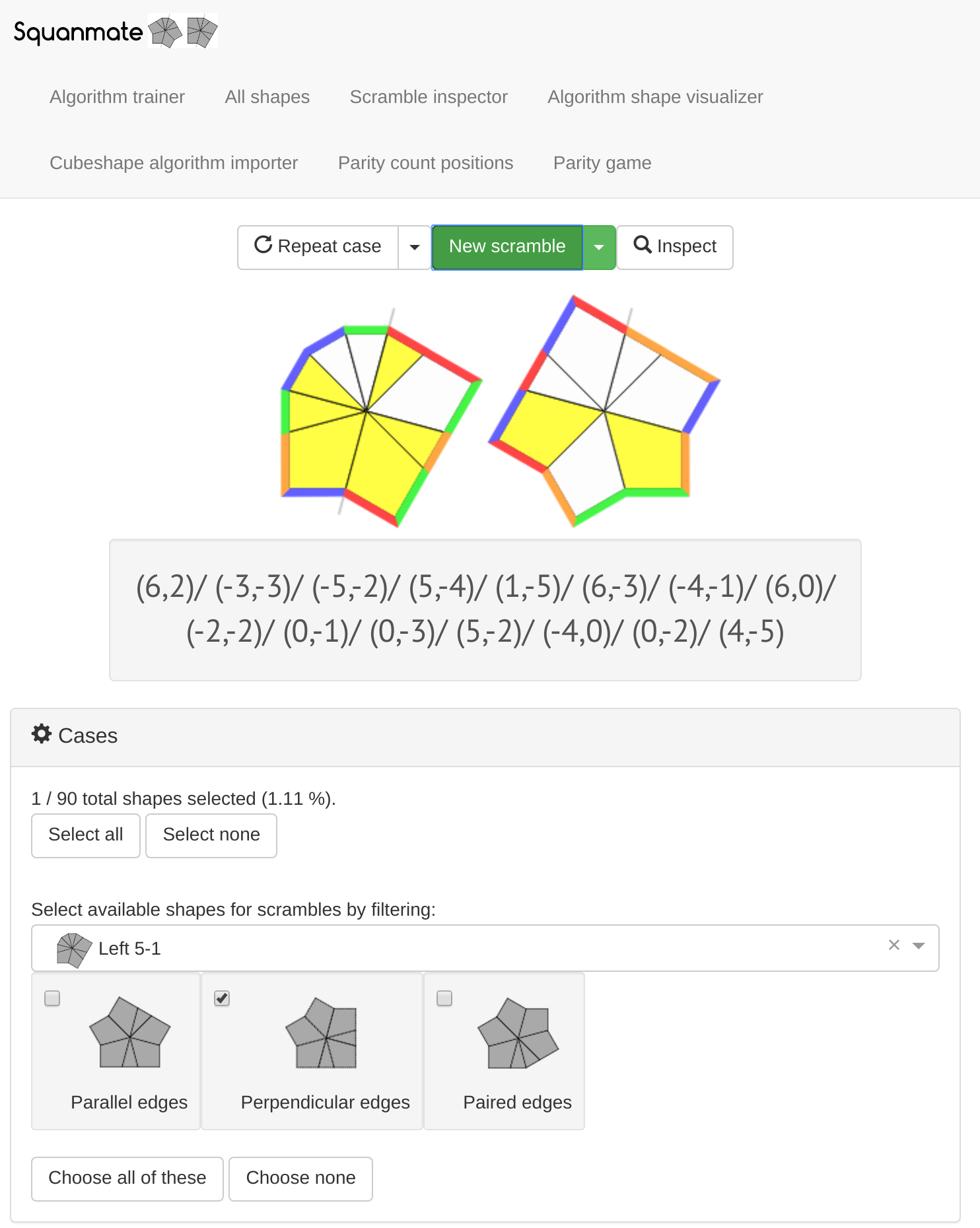https://github.com/mikavilpas/squanmate
Square-1 trainer, analysis and general learning tool
https://github.com/mikavilpas/squanmate
clojurescript devcards figwheel html5-canvas quil react reagent
Last synced: 6 months ago
JSON representation
Square-1 trainer, analysis and general learning tool
- Host: GitHub
- URL: https://github.com/mikavilpas/squanmate
- Owner: mikavilpas
- Created: 2017-05-30T16:39:04.000Z (over 8 years ago)
- Default Branch: master
- Last Pushed: 2018-11-06T05:40:50.000Z (almost 7 years ago)
- Last Synced: 2025-03-23T13:22:40.463Z (7 months ago)
- Topics: clojurescript, devcards, figwheel, html5-canvas, quil, react, reagent
- Language: Clojure
- Homepage:
- Size: 6.23 MB
- Stars: 17
- Watchers: 3
- Forks: 3
- Open Issues: 12
-
Metadata Files:
- Readme: readme.md
- Changelog: changes.md
Awesome Lists containing this project
README

![logo][logolink]
*Squanmate* is a Square-1 trainer, analysis and general learning tool.
**You can run it with a modern web browser right now.
Try it [here][applink]!** (the link will change with every release,
so always open it from this readme file!)
Squanmate can help you:
* **Train your cubeshape (or cubeshape parity) skills**
* select the combinations of shapes you would like to train
* a random scramble is generated for you. Solve away!
* repeat the selected case with the same/opposite parity, to train both cases
effectively!
* enable an optional inspection timer to see if you can determine the parity
of your puzzle within 15 seconds
* **Train algorithms**
* like with cubeshape cases, select the cases you want to train
* supported algsets:
* **cubeshape (square square)** even & odd parity scrambles
* **edge permutation (EP)**
* **permute last layer (PLL)**
* **Lin corner permutation**
* **Lin PLL+1** ([source][lin-pll-plus-1-algs])
* cases are split into even and odd parity cases for your convenience.
* **Learn and remember all different shapes and their names**
* **Inspect a scramble**
* check whether the scramble gives an odd or even **parity count** and see
exactly what the count consists of.
* rotate the scramble how you like
* link to a scramble so that it can be returned to later.
* **Display cubeshape algorithms and the shapes the algorithm goes through**
* it's a good aid for memorizing algorithms!
* link to your created visualizations from e.g. your Google Sheets
* **Cubeshape parity helpers**. If you use Cale Schoon's cubeshape parity
method, Squanmate offers a couple of helpful features:
- displays whether your entered algorithm is **even** or **odd** for that
specific starting count position
- allows you to find a more comfortable count position by rotating either
layer for counting, then undoing that rotation for the algorithm. It's
really easy to find out interesting things this way. For example, did you
know that for all kite cases every sliceable position for a kite layer
gives the same count?
* **Import a cubeshape algorithm**. Say you have a cool alg that you would like
to inspect or verify with Squanmate. Enter your alg into the *Cubeshape
algorithm importer* and it will be recognized with minimal work on your part.
I use this to import the cubeshape algs originally made for the more popular
blind tracing CSP method.
* **Inspect all possible parity count positions for all shapes**. When counting
your parity, it's possible to start at multiple positions and still get the
same result. Having options for counting will come in handy when your scramble
orients the layers uncomfortably.
* **Train your skills in recognizing parities in color sequences**. See the
Squanmate algorithm document below for details on how color sequences
contribute to the parity of the puzzle.
## Related Square-1 learning resources
- I have collected all cubeshape parity algorithms for the Cale
Schoon method. If you use that method, take a look at
[my algorithms at Google Sheets][my-algs]
- I use a simple but effective method for solving the Square-1. If you want to
take a look, here are [my Lin method algs][my-lin-algs]
# Development instructions
Master:
[](https://travis-ci.org/sp3ctum/squanmate)
Develop:
[](https://travis-ci.org/sp3ctum/squanmate)
As for dependencies, you need a clojure development environment. Check out
figwheel, then start hacking something!
- To start figwheel in your REPL, evaluate this
```clojure
(do (require 'figwheel-sidecar.repl-api)
(figwheel-sidecar.repl-api/start-figwheel!)
(figwheel-sidecar.repl-api/cljs-repl))
```
## Java 9
If you’re using JDK 9, you need to include the JVM options `"--add-modules" "java.xml.bind"`
in your _project.clj_. Add it just to the existing one that the line fully reads
`:jvm-opts ["--add-modules" "java.xml.bind" "-Xmx1G"]`. Do not commit this, as it breaks